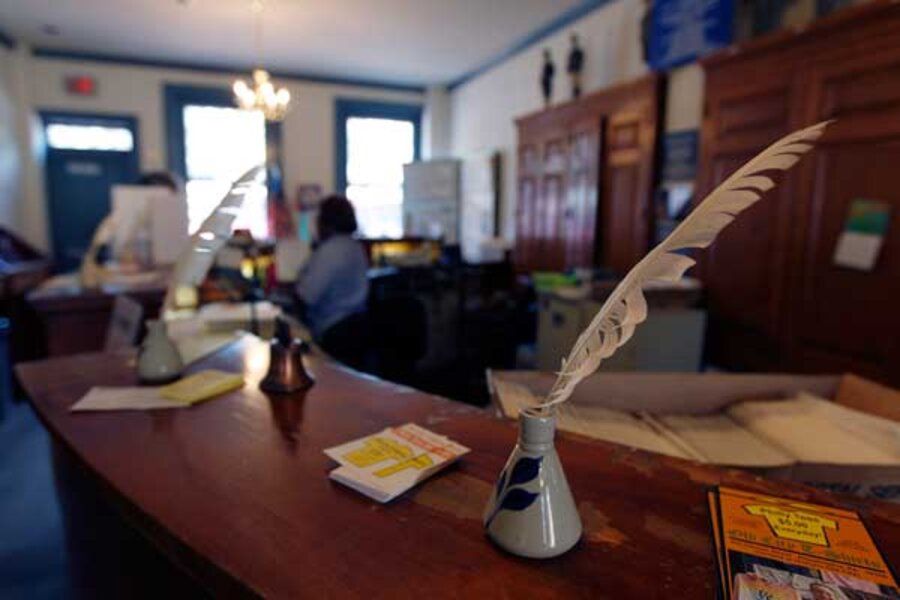Post office closures: What happens if a town has no post office?
Loading...
Postmaster General Patrick Donahoe on Tuesday painted a picture of what the post office of the future might look like. And for many Americans, he said, it might not even be a post office at all.
With the United States Postal Service facing a potential $8 billion deficit this year as mail volume declines, Mr. Donahoe said the agency will consider closing 3,653 of its 31,871 post offices. Particulaly in rural areas, that could leave a town without a post office – but not necessarily without the Postal Service, he said.
The Postal Service network already includes some 70,000 locations in drug stores, grocery stores, or self-service kiosks. In communities where retail post offices might close, a potential replacement would be this so-called Village Post Office model, which operates in a local business to offer equivalent services.
“By working with third-party retailers, we’re creating easier, more convenient access to our products and services when and where our customers want them,” Donahoe said in a statement. “The Village Post Office will offer another way for us to meet our customers’ needs.”
The question of which post offices on the Post Office Study List will survive and which will be closed will be answered in the coming months, with the first closures starting in January. Once closures are announced, customers can file an appeal with the Postal Regulatory Commission. The commission will then allow the closing to occur or have the Postal Service conduct further evaluation.
[Editor's note: The original version of the story incorrectly described the appeal process after the Postal Service announces office closings.]
But Donahoe noted Tuesday that a large percentage of Americans no longer use post offices.
“Our customers' habits have made it clear that they no longer require a physical post office to conduct most of their postal business,” he said, noting that more than 35 percent of the Postal Service’s revenue is generated from usps.com, iPhone or Android mobile applications, self-service kiosks, and other stores like supermarkets and pharmacies.
Indeed, of the nearly 3,700 locations on the list, 3,061 have annual revenue of less than $27,500 and a daily workload of less than two hours.
Many of these locations are in rural areas, which presents a conundrum, says Ruth Goldway, chairwoman of the commission, an independent agency that oversees and advises the Postal Service.
[Editor's note: The original version misspelled Ruth Goldway's last name.]
“The smaller offices don’t make money, but they weren’t designed to make money. They were designed to serve the public,” Ms. Goldway says.
Over the years, smaller offices have been able to operate freely because the larger offices compensated for their loss in revenue, she says.
Goldway suggests that closing offices in rural communities, where alternatives – like sending mail at Wal-Mart – are not available puts the Postal Service at risk of not fulfilling its "universal service obligation" of providing uniform prices, equal access to services, and frequent delivery of mail to all areas of US.
“A case can be made that the Postal Service’s greatest strength is its ubiquity, and the fact that people identify with it even in the smallest communities in America,” Goldway says. If “you reduce its visibility and ubiquity, you reduce its power and its ability to rebound from the economy. It’s a risk.”
In 2009, the Postal Service approached the commission with plans to close 1,200 stations and branches. In the end, it only closed about 160 based on the commission's advice.
The Postal Service, however, has now maxed out on a $15 billion loan from the US Treasury.





